- seelej's home page
- Posts
- 2011
- 2010
- December (2)
- November (3)
- October (3)
- September (3)
- June (2)
- May (3)
- April (2)
- February (9)
- January (1)
- 2009
- December (1)
- October (3)
- September (4)
- August (1)
- July (1)
- June (6)
- May (1)
- April (4)
- March (5)
- February (1)
- January (4)
- 2008
- My blog
- Post new blog entry
- All blogs
Relative Luminosity Studies - VI
Here I present some more studies of the luminosity systematics. In this blog I am looking at the two boards that sample the individual tiles of the BBC (although 7 and 12) actually sample two tiles of piece because of scaler space limitations. All of the data in the top section is without the requirement of the BBCX (vt201) bit firing. Requiring that bit and its effect will be investigated later on. First, I plot the raw total count in each tile to look for anomalous tiles. See below
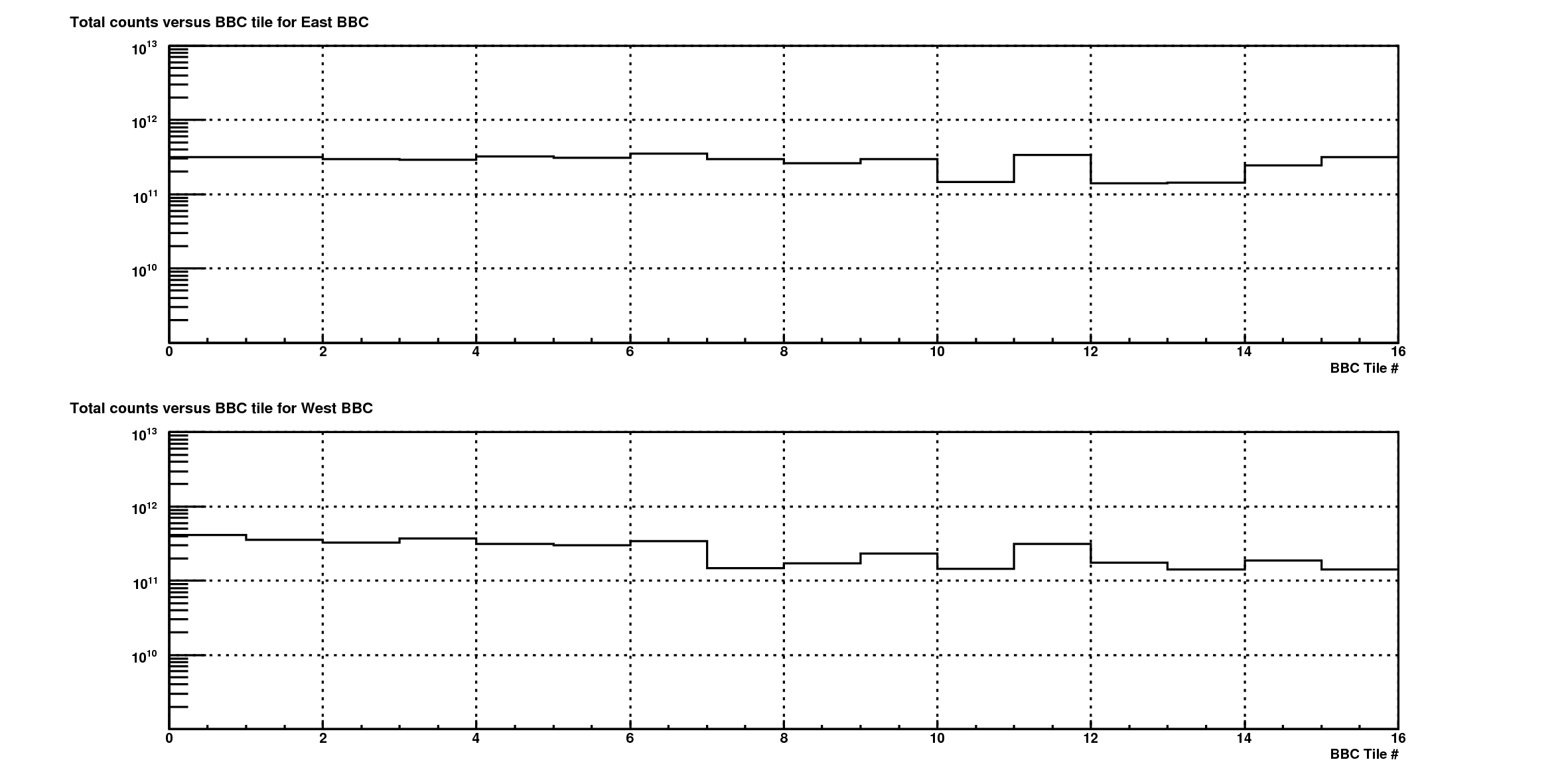
There don't appear to be any anomalous tiles just by looking at the total counts even though a few of them do appear a bit low. The differences between the highest counts and the lowest counts is about a factor of 5. Just for reference here is the layout of the tubes in the BBC.
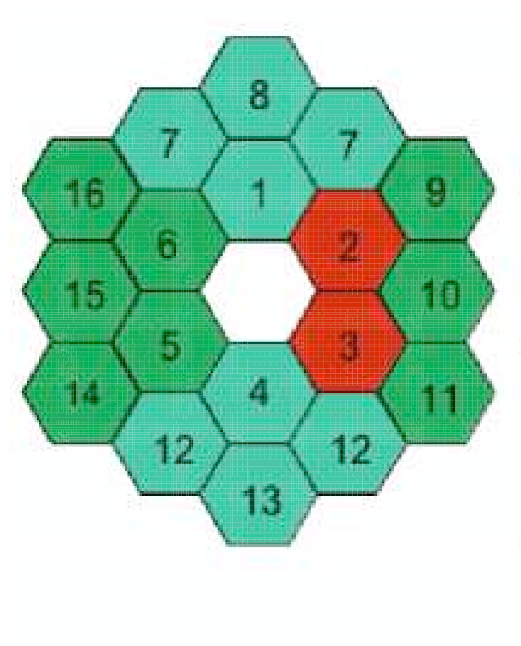
Next I plot the A/M corrected total counts versus bunch crossing number for each of the tiles in the east and west. First the east. Then the west.

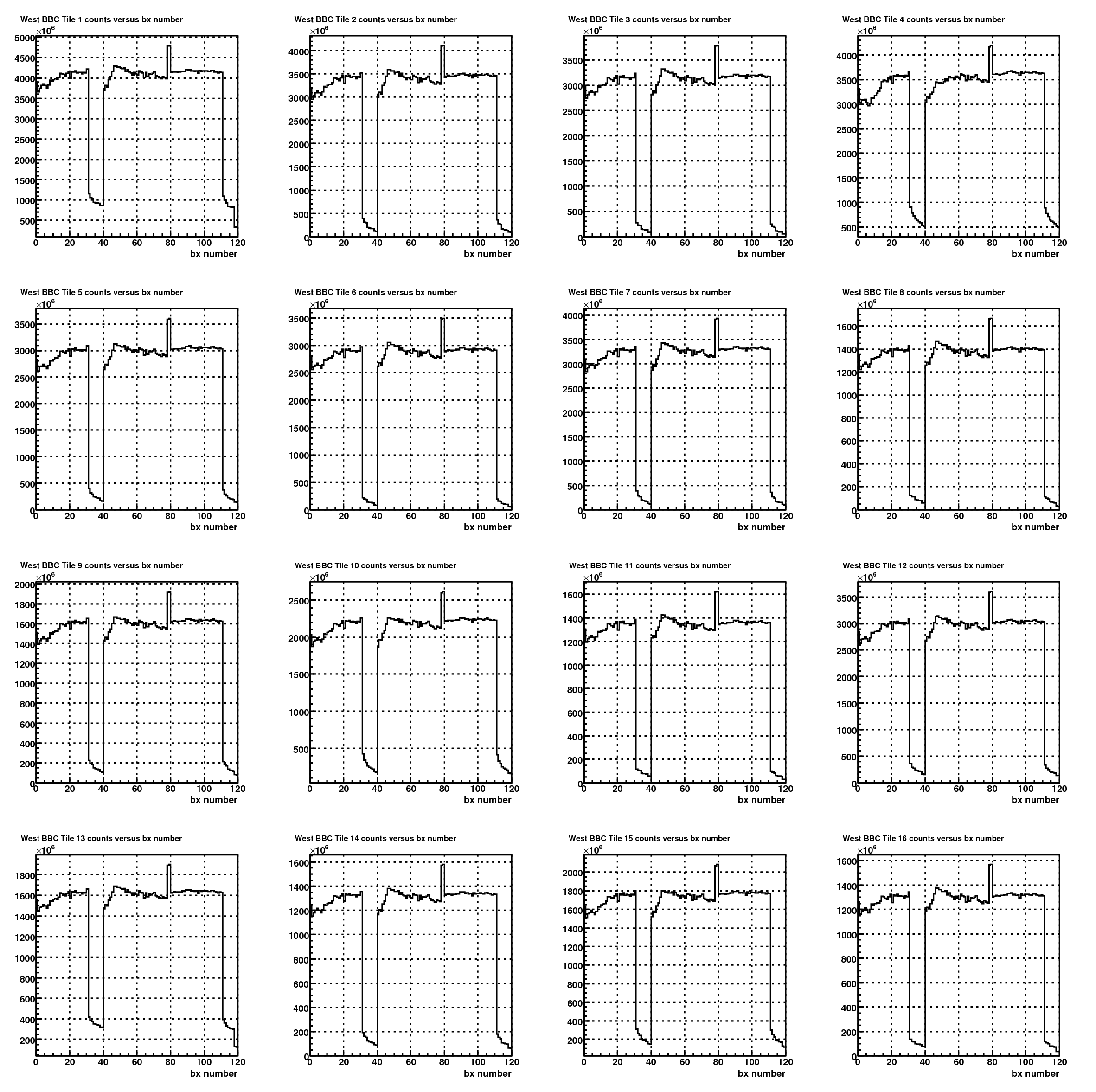
There are some anomalies here. There are a few tubes that seem to have quite high rates in the abort gaps, especially in the east. It is currently thought that most of this is due to afterpulsing in the PMTs of the BBCs, but how much is due to that and how much is due to actual background is not currently understood. This should be studied in greater detail for future running if the uncertainties need to be reduced beyond the 2e-4 level, though it isn't clear that this will ever be achieved. You will also notice that there appears to be odd behavior in the last bunch or so (119 and 120) in that the rate drops very quickly. This is actually in the data (looking through the output by hand) and it is unclear to me what is going on there.
For the rest of the analysis I will cut out bunches={20,60,78,79,80,31-39,111-119}. Next I investigate the cross ratios in the BBC to look for any anomalous behaviors. The formulas for what I calculated are shown next

where the T(op) = tubes {1,7,8}, B(ottom) = tubes {4,12,13}, L(eft) = tubes {5,6,14,15} and R(ight) = tubes {2,3,9,10,11}. Tube 16 in the east has some problems so it was dropped from this analysis. It should be also noted that I didn't do the summing the proper way in this analyses. It should really be the logical OR of any of the tubes in the definition of the T,B,L and R, but since I asked Jim just to give me the straight counts in each of the tubes for other investigations I just used those numbers and did the sums without regard for the overlaps, but with the low rates I don't think this is going to be a huge effect. Also, for the rest of the plots now require that the vt201 bit have fired as well. It was not required before since it squashes the effects in the abort gaps which may be of interest. First I looked at the single spin asymmetry cross ratios (the first four formulas)

There are clearly some spin effects going on here. It appears that both the blue and yellow beams have a transverse polarization throughout most of the run. The rotator tune can be seen near the end of the run that lessens the transverse polarization in the blue beam, but there is still a persistent transverse polarization in the yellow. Also there are a few fills where the transverse spin seems to flip (rotate by 180 degrees and maybe change in magnitude). These are perhaps the same effects that were seen in the BBCX-ZDCW delta-Rs where the effect flipped and this will be investigated. Next I plot the PP-PM asymmetries (the last two formulas) to see if there is any double spin asymmetry dependence.
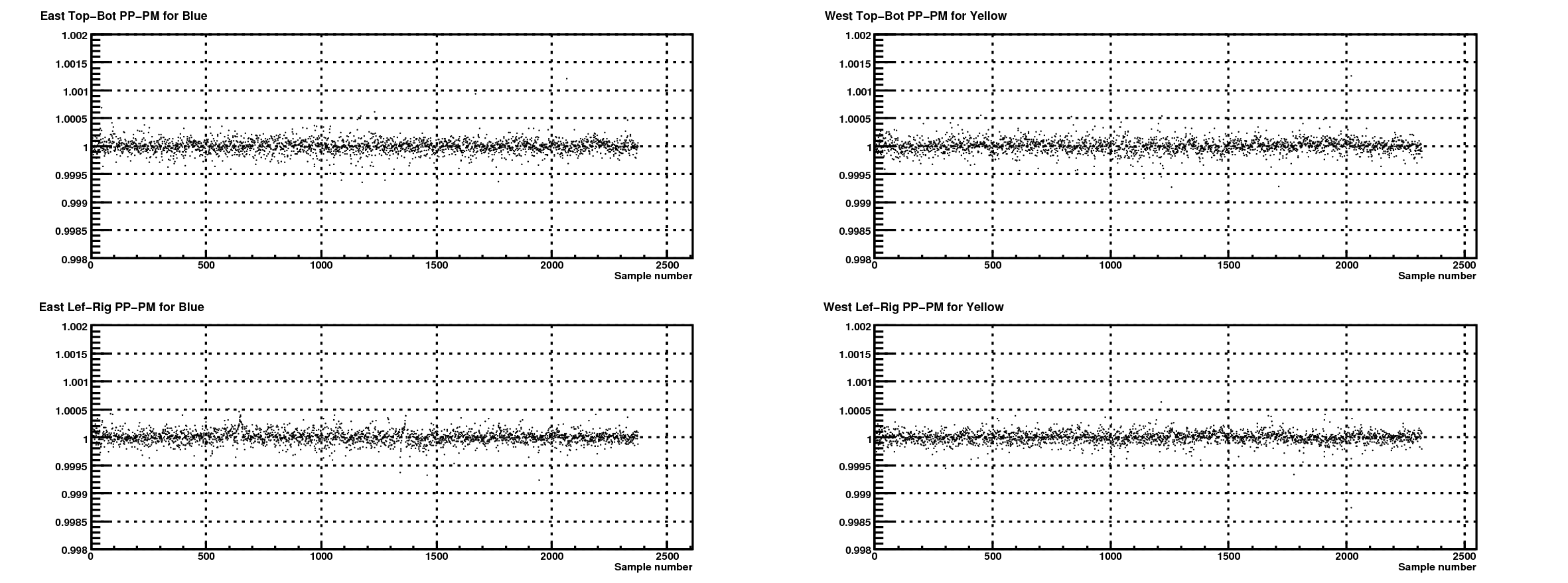
There don't appear to be any spin configuration dependence in this quantity for either BBC and this is the quantity that is really relevant to the A_LL analyses. In addition to these asymmetries Hal asked me to look at the following asymmetries
![]()
where C1 = tubes{2,5} and C2 = tubes{3,6}. They are plotted below.
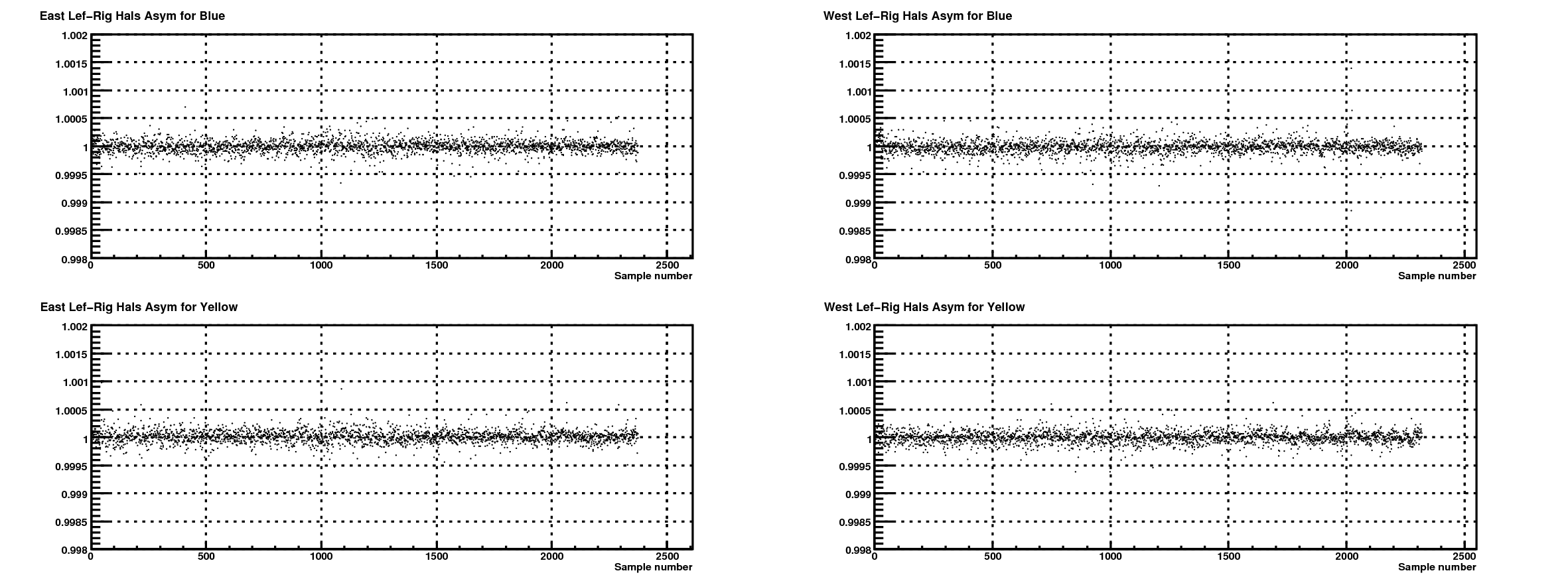
There are no spin effects apparent in any of these quantities which is good because there shouldn't be.
In summary there are persistent transverse spin effects in the BBC and the largest is at the level of 3e-4, but there are no spin effects for the PP-PM asymmetries. The periods of flipping for the single spin asymmetries are still being investigated and unless this can be explained I would suggest these runs/fills are cut from the analysis.
- seelej's blog
- Login or register to post comments
